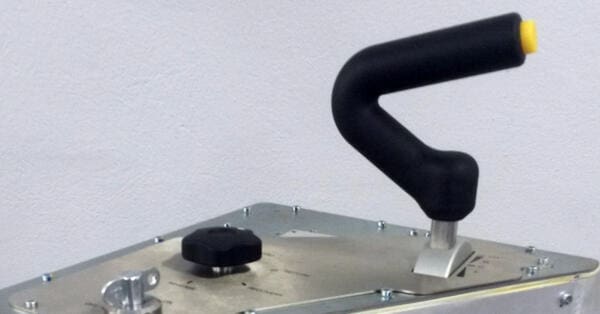In Italy, SPII S.p.A. is a leader in the design and construction of components and equipment for railway vehicles. SPII recently decided to review its approach to the use of synthetic materials in its applications and opted to introduce structural, self-extinguishing thermoplastic compounds from LATI.
The SPII story continues with LATI after the company decided to review its approach to the use of synthetic materials, including thermosetting resins in its applications, and has therefore opted to introduce structural, self-extinguishing thermoplastic compounds. To allow this transition, the new materials needed to perform better than resins such as BMC or phenolic ones, particularly in terms of mechanical strength and durability.
The company’s last-generation grips, used on traction/braking control devices, are therefore made from LATAMID 66 H2 G/50-V0HF1, a PA66-based compound reinforced with 50% glass fibre in weight. Thanks to a halogen-free system of additives with a low environmental impact, the compound is self-extinguishing.
The feasibility of the project was first evaluated through FEM simulations, which served to validate the product from a structural point of view: this was a necessary stage in order to establish whether the strength of the material, the clamping system and the special arrangement of reinforcing ribs would allow it to pass the necessary test.
Once it had passed the test, which also included the application of a vertical force of 1,000 N on the horizontal arm of the lever, SPII launched production of this modern accessory, which, unlike the previous solutions, is suitable for end-of-life recycling.
The LATI compound has a breaking strength of almost 200 MPa, which puts it on a par with the best non-self-extinguishing solutions. It also boasts excellent aesthetics and processability, the latter a key attribute for ensuring a simple and productive moulding process.
The material has a certified UL94 V0 rating from 3 to even 0.4 mm, and according to IEC 60695-2-12 it has a glow wire flammability index (GWFI) of 960°C. Therefore, it is potentially an ideal grade for structural and metal replacement applications, even ones requiring very low thicknesses and maximum flame retardancy.
Finally, and crucially, its UL 746 B relative temperature index (RTI) is 130°C at all thicknesses. This demonstrates the considerable durability, over time at different temperatures, of the material’s main mechanical, electrical and flame retardant characteristics.

